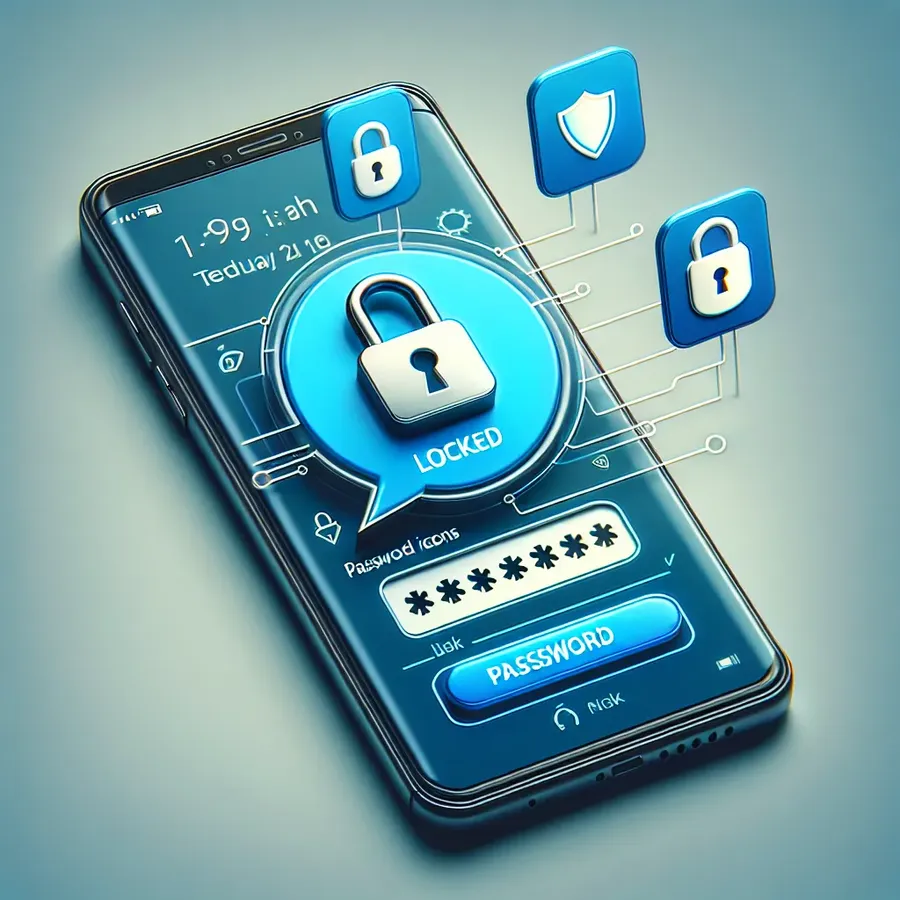Secure Your iMessages: Step-by-Step Guide
Learn how to put password on iMessage to protect your private conversations and enhance your digital security.

In today’s interconnected society, protecting our privacy is akin to safeguarding a treasure chest in a bustling market. iMessage, a staple in Apple’s ecosystem, is a prime example where security meets convenience. But how do we ensure that our private conversations remain just that—private? Let’s delve into the world of secure messaging and explore how to place a password on your iMessage conversations.
Why Password Protect iMessage?
The Importance of Digital Privacy
In our daily digital interactions, personal conversations can be as sensitive as they are frequent. Without proper safeguards, these conversations can be vulnerable to unauthorized access, leading to potential privacy breaches. Password protecting iMessage isn’t just a measure—it’s a necessity to maintain the confidentiality of our personal exchanges.
Potential Risks of Unprotected Messages
Imagine your private conversation being read by prying eyes—sounds unsettling, right? Unprotected iMessages are at risk of unauthorized access, which could expose sensitive information and lead to identity theft or reputational harm. By securing your iMessages, we can shield our personal and professional lives from these threats.
How to Put a Password on iMessage
Setting the Stage: Necessary Preparations
Before jumping into the technical steps, ensure your device is updated to the latest iOS version. An updated system not only enhances functionality but also strengthens security features.
Step-by-Step Guide
- Enable Two-Factor Authentication:
– Navigate to Settings > [Your Name] > Password & Security and enable two-factor authentication for your Apple ID. This adds an extra layer of security, requiring a verification code in addition to your password. - Secure Your Lock Screen:
– Go to Settings > Touch ID & Passcode (or Face ID & Passcode), and set a strong passcode. This ensures that only you can access your apps, including iMessage. - Use Screen Time for Added Security:
– In Settings, tap Screen Time, then App Limits. Set a limit specifically for the Messages app, requiring a passcode to use it beyond the specified time. - Regularly Update Your Password:
– Change your passcode frequently to ensure it remains secure. Avoid using easily guessable codes like birthdays or sequential numbers.
Enhancing iMessage Security: Tips and Tricks
- Use Forest VPN for Secure Messaging:
- A VPN like Forest VPN encrypts your internet connection, adding another layer of security when sending messages. This is especially useful when using public Wi-Fi networks.
- Avoid Phishing Scams:
- Be cautious of suspicious links and attachments in messages. Phishing attempts can compromise your device’s security.
Testimonials
“Using Forest VPN with iMessage gives me peace of mind. I know my messages are secure, even when I’m on the go.” — Alex, Tech Enthusiast
“Setting up a password on my iMessage was easier than I thought, and it significantly improved my privacy.” — Jamie, iPhone User
Common Issues and Solutions
Forgotten Password
If you forget your iPhone passcode, you’ll need to reset your device. Always back up your data to avoid loss.
Dealing with Unauthorized Access
If you suspect unauthorized access, change your Apple ID password immediately and review your account settings.
Summary
Protecting iMessage with a password isn’t just a technical step; it’s a commitment to maintaining your privacy in an ever-connected world. With simple steps like enabling two-factor authentication and using a VPN, you can ensure your digital conversations remain private and secure. Remember, in the world of digital communication, privacy is your greatest ally.
How to Put Password on iMessage
To secure your iMessage, follow these steps:
- Set a Strong Passcode:
– Go to Settings > Face ID & Passcode (or Touch ID & Passcode) and create a strong passcode. - Enable Two-Factor Authentication:
– Navigate to Settings > [Your Name] > Password & Security to enhance your account’s security. - Use Screen Time:
– In Settings, enable Screen Time and set an app limit for Messages to require a passcode. - Add Forest VPN:
– Protect your internet connection and messages with Forest VPN for added privacy.
For ultimate security, consider using Forest VPN today! Try Forest VPN.
FAQs about Password Protecting iMessage
Can I password protect iMessage specifically on my iPhone?
No, you cannot password protect iMessage directly on your iPhone. However, you can secure your entire device with a strong passcode, Face ID, or Touch ID, which will protect all your apps, including iMessage.
How does password protecting iMessage enhance my privacy?
By password protecting iMessage, you prevent unauthorized access to your conversations. This minimizes the risk of privacy breaches and helps safeguard sensitive information from potential threats.
What should I do if I forget my password for my iPhone?
If you forget your iPhone passcode, you will need to reset your device to factory settings, which erases all data. Always ensure you back up your device regularly to avoid data loss.
Is two-factor authentication really necessary for my Apple ID?
Yes, enabling two-factor authentication for your Apple ID is crucial as it adds an extra layer of security. Even if someone knows your password, they cannot access your account without the second verification step.
Are there any additional security measures I should consider for iMessage?
In addition to setting a strong passcode and enabling two-factor authentication, consider regularly updating your device’s software, avoiding suspicious links, and using a VPN for secure messaging.
